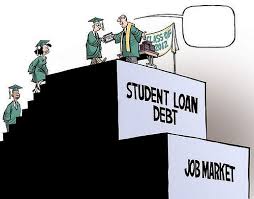
Have Student Loans? The Rules Have Changed
I may have just missed the student loan debt explosion when I graduated with my undergrad degree in 1998. While college was expensive to attend twenty years ago, we were all borrowing money to get an education, it was nothing compared to the amounts borrowed during the college financing boom of the last fifteen years. Nowadays young people are in record amounts of debt the moment they are handed a diploma which means starting off their earliest earning years with essentially a thirty year mortgage to pay back. College ain’t what it used to be and many times all this borrowed money is for a degree that yields earning power guaranteed to tie up their income for the better part of their career.
The student loan income-based repayment plans have been a help to many people. These plans allow monthly payments to be calculated based upon a person’s income which give people a fighting chance to start paying back their loans and be able to eat as well. This is a big deal for those just starting out but there are at least two challenges tied to this calculation. First, the debt will take that much longer to pay off and second when you go to apply for a mortgage the bank approving your application will hit the person for up to 1% of the balance of the loan as a minimum monthly payment for qualifying regardless of what the credit report shows as the actual minimum payment.
The good news is the rules have changed. Now there is some hope for those who went to college and earned a degree in Mongolian tribal dance but borrowed enough money to finance a condo at the beach. Banks have made two very nice enhancements to their student loan guidelines. First, they will take the income-based repayment plan being reported on the credit report as long as it isn’t zero and second, banks will allow student loans to be combined with a refinance. That means a current home owner who has student loan debt can refinance their mortgage and pay off their student loan debt by including it in the new mortgage without taking the “cash out” hit to the interest rate. This allows the student loan debt to become tax deductible and many times lowers the interest rates the person was paying.
Can you see the progression here? For those on the sidelines of home ownership because they currently have huge student loans could use the first benefit to qualify for the mortgage to buy the home and a few years later use the second benefit to refinance that mortgage.
The right mortgage plan is where this starts and the right mortgage plan starts by clicking here.
By David Hughson
Mortgage Planner & Student Loan Killer
858-863-0264
